|
Headaches Due to Myofascial Trigger Points
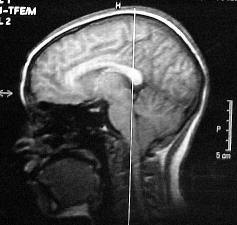
Devin Starlanyl, MD

(This information may be freely copied and distributed only if unaltered,
with complete original content.)

There are many possible causes of headache. For people with the hyper
aroused autonomic nervous system of FMS, sensitivity to noise, cold, heat
and light can add to our headache woes.
Allergies, fatigue, hormonal imbalances, reactive hypoglycemia, congestion,
vasomotor rhinitis, and neurotransmitter dysregulation can also be factors.
By far, however, the most common cause of headaches is referred pain from
myofascial trigger points (TrPs). All the before-mentioned factors often
activate and/or perpetuate TrPs. Since TrPs can entrap blood and lymph
vessels as well as nerves, TrP pain is often confused with neurological,
rheumatic, or inflammatory pain, especially with some of the more bizarre
autonomic symptoms that can occur. TrP headache pain is often variable, and
may change with body position or muscular activity. It may be so severe at
times that you can't function or even think clearly. TrPs refer pain
elsewhere in specific patterns, so it is important to become familiar with
the pattern and any possible accompanying symptoms, as well as the location
of the instigating trigger point. All of these TrPs are documented in the
detailed medical texts "Myofascial Pain and Dysfunction: The Trigger Point
Manuals" Vol I and II by Janet G. Travell and David G. Simons.

The frontalis muscle is part of the broad musculo-fibrous layer of the
occipito-frontalis muscle, which stretches across the forehead, top and
back of the skull. The frontalis portion is -- you guessed it -- in the
front. TrPs in the frontalis muscle remain local, causing pain over the
forehead, often radiating upwards over the scalp. The TrPs will let
themselves be known to you, they aren't shy. When you press them, they
scream at you, "HERE I AM!" You usually feel like screaming right back at
them, "GO AWAY!" These TrPs are often activated by overwork, especially in
tense people who have a lot of facial expression.
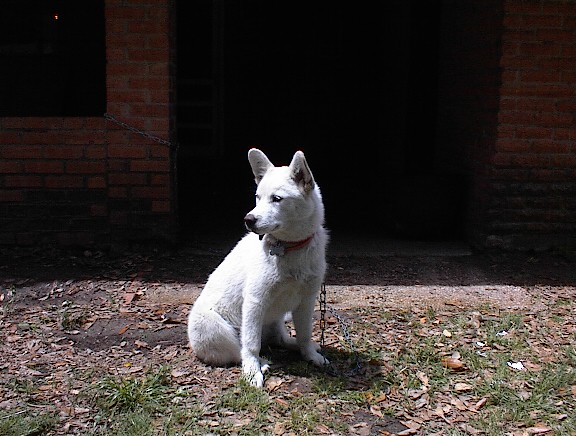
Occipitalis TrPs cause local pain over the area of the rest of the skull,
but also refer pain to the back of the head, pain through the skull, and to
the back of the eyeball. You often can feel the lumps and bumps of the TrPs
with your fingers. These may become so severe that you cannot bear weight
of back of your head on a pillow. TrPs in the head and neck region respond
to moist heat, unless there is nerve entrapment. Then, ice will help.
Massage is beneficial, as well as CranioSacral Release (CSR) and Spray and
Stretch (S&S), but you also must check for perpetuating factors such as
stress, eye strain and overwork.
Temporalis TrPs occur in a line a little beyond the outer edge of the eye
to just behind the tip of the ear. Each temporalis TrP refers pain in a
different pattern. The one closest to the eye refers pain over eyebrow,
straight up the side of the head, and the front upper teeth. TrPs further
back along the line to the ear refer pain to different teeth. The further
back the TrP, the further back the tooth or teeth. They also refer pain
upwards of their position, causing headache.
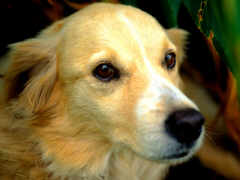
TrPs in the extrinsic eye muscles are a frequent contributor to headaches.
For your vision to be clear, both eyes must take the same picture at the
same time, and all the muscles of each eye must work together in harmony. A
misalignment of the eyes can be caused by TrPs in any of these muscles.
Double vision, blurry vision and/or changing vision can result if these
muscles are being contracted at different tension. Put one hand on your
head, above your forehead. Then, keeping your head still, try to look at
your hand. This shouldn't hurt. If it does, the TrPs are calling to you,
letting you know they're around. Move your eyes from one upper corner to
the other, but do this gently. This may activate the TrPs and cause a
headache. This does not mean you shouldn't do the exercise -- it is a
warning letting you know how badly these stretches are needed. Start
slowly, and go gently, but keep at it. Remember to vary your gaze -- look
up and out once in a while when you are doing close work. Poorly fitting
glasses or improperly corrected vision can contribute to your headaches.
This is especially tiresome if your vision is changing constantly due to
these extrinsic TrPs. TrPs around the eyes are also likely to be involved.
Get into the habit of doing acupressure work on your face and neck for
brief periods, whenever you have the time. Check for masseter TrPs along
the lower border of the jaw just after the "corner". These TrPs, by no
means the only possible ones in the masseter, refer pain along the eyebrow
line, as well as to an area along the side of the lower jaw, contributing
to headaches. TrPs in the lateral pterygoid muscle are found about an inch
in front of the center of the outer ear, and about an inch below that.
These TrPs refer pain in front of the ear and pain deep in the TMJ and the
maxillary sinuses. Both of these, especially the sinus pain, can add to
headache misery. There is a TrP in the back of the digastric muscle that
sometimes refers pain to the back of the skull. You can find this TrP right
off the corner of the lower jaw, immediately next to it in the throat. It
also radiates to the upper part of the sternocleidomastoid (SCM) -- which
is an exceedingly complex muscle we'll tackle later. The spillover pain can
be from the front of the throat under the chin along the line of the jaw,
much worse under the ear, and continuing to extend upward and backward in a
diagonal nearly to the back of the head.

In the neck, as in many other parts of the body, TrPs can occur in many
layers of muscles. The splenius capitis muscles are wide bands that run
from the back of the skull at the sides to the upper vertebrae. TrPs here
feel like sore areas on either side of the back of the head, directly under
the skull. These TrPs transmit pain to the top of the head. Splenius
cervicis muscles are thinner muscles connecting vertebrae. TrPs in the
upper splenius capitis muscles send pain to the back of the head and
diffusely throughout the skull, with intense pain behind the eyeballs. They
can cause blurring of near vision in the eye on the same side as the TrP.
TrPs in the lower splenius cervicis muscles are found on either side of the
neck below where it joins the trunk, above the shoulder blades. Referred
pain flows down to the shoulder, collar bone, and angle of the neck. You
may not be able to rotate your neck due to pain. There are several types of
posterior cervical muscles. A TrP in the semispinalis cervicis, alongside
the spine right below the skull, creates pain up the back of the head
toward the top. A TrP in the semispinalis capitis muscle just above the
base of the skull, on the back of the side of the head, creates a headache
like half a headband, with the highest intensity in the temple and over the
eye. If you have TrPs on both sides, the pain can be incapacitating. A TrP
in between these two other TrPs sends pain up to the base of the skull. It
may also cause neck pain, spilling over to the top of the collar bone and
upper inward border of the shoulder blade. Posterior cervical TrPs below
the skull can also produce pain in the hands and feet on both sides, or to
the body below the shoulder on the same side as the TrP. Place your hand
alongside your head, with the heel of your hand directly under your ear,
resting against the square of your jaw. Your outstretched fingers should be
wrapping diagonally around to the back of your head. Find suboccipital TrPs
on a diagonal line (the higher side is toward the back of the skull) under
your palm. These TrPs initiate deep head pain that radiates from the back
of your head to the cavity of your eye. The pain seems to penetrate inside
your skull, because these muscles are deeply placed, just below the base of
the skull on the side.
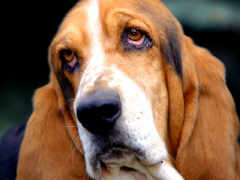
Multifidi run along the entire spine. Neck multifidi are often headache
inducers. These muscles are short and deep, and go from one vertebra to
another. Pain is transmitted in different patterns depending on which
multifidi muscle has TrPs. Activation is usually caused by prolonged
bending of your neck doing close work, by stooped posture, or by gross
trauma. If you have trigger points in the multifidi of the neck vertebrae,
pressure from your pillow at night can be intolerable. In addition to pain,
there can be a tingling, numbness, or burning pain over the back of your
head on the same side as the TrPs. This is an indication that the TrPs are
causing nerve entrapment. Check to see that your workstation is
ergonomically correct. Don't slump. Avoid tight hats and headbands, heavy
glasses, heavy overcoats and tight collars. To relieve these symptoms, sit
backwards in a hot shower while you stretch your neck muscles downward.
The trapezius muscle may have TrPs in many locations. There is one spot
that sends pain up the same side of the neck and head, in a hook shape.
Follow a line about an inch behind your ear down the side of your neck
above the collar bone about halfway to the start of the shoulder. There is
often spillover pain in the neck region, beneath the ear, and well as under
the eyebrow. This is a major source of tension headache and neck aches.
There can also be a mild pain at top of head, lower back teeth and outer
ear. One or both ears can burn, turn red, or lose all color as blood
vessels dilate or contract in response to this TrP. The sternocleidomastoid
(SCM) muscle connects to the head, but separates into two parts. One
connects to the collar bone, and one to the breastbone. TrPs in the
breastbone (sternal) part, in the front, can refer pain to top or back of
head, over the eye. Midlevel TrPs send pain arching across the cheek and
jaw, over the eyebrow ridge, and deep inside eye, as well as pain to the
ear on the same side. TrPs in the upper sternal SCM cause pain behind but
not close to the ear, and to the back of the head. SCM TrPs also affect the
eyes and sinuses, and can cause tearing, reddening or drooping of eye, as
well as inability to raise the upper eyelid. You may experience visual
disturbances. Patterns from window blinds and escalator treads can cause an
out-of-control, seizure-like feeling. Stripes, checks and polka dots can be
a problem -- anything with strongly contrasting light and dark spaces. You
may experience dizziness, runny nose and sinus congestion on the involved
side, as well as ringing in ear and deafness. TrPs in the collar bone
(clavicular) section cause a frontal headache and earache. Middle TrPs in
this section also cause pain to the front of the head, which can extend
across the forehead to other side. Anything which hyper extends the neck,
such as sleeping on two pillows, can aggravate these TrPs. Mechanical
stresses such as doing overhead work, writing on a blackboard, or hanging
curtains, aggravate these TrPs.
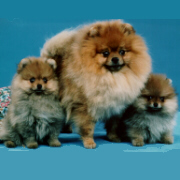
For more information and diagrams see "Fibromyalgia and Chronic Myofascial
Pain Syndrome: A Survival Manual" by Devin J. Starlanyl M.D. and Mary Ellen
Copeland MA,MS. New Harbinger Oakland California USA 800-748-6273 Canada
800-561-8583.


|